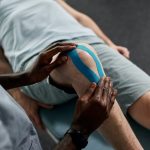In the world of sports, anterior cruciate ligament (ACL) injuries are a common and challenging eventuality. This is especially true in soccer, a sport that demands high levels of agility, quick changes in direction, and explosive leg strength. ACL injuries can sideline players for extended periods, often requiring surgical reconstruction followed by an intensive and carefully planned rehabilitation program. This article aims to provide a thorough analysis of how to design an effective rehab program for ACL reconstruction in soccer players.
Understanding ACL Injuries
The anterior cruciate ligament, often abbreviated as ACL, is one of the key ligaments that help stabilize the knee joint. When overstretched or subjected to sudden, intense pressure, the ACL can tear, causing pain, instability and a halt in sports activities.
This might interest you : How Can Cognitive Behavioral Therapy Assist Athletes in Overcoming Performance Slumps?
ACL injuries are frequently seen in sports that involve a lot of jumping, rapid direction changes, or high impact collisions – such as soccer. In fact, soccer players are among the most likely athletes to suffer an ACL injury. This is where the importance of ACL reconstruction and the subsequent rehabilitation process comes in to play.
The Importance of Rehabilitation After ACL Reconstruction
Rehabilitation after ACL reconstruction is a long-term process, often taking anywhere from 6 to 12 months before the player can return to competitive soccer. It’s a process that is integral to regaining knee strength, stability, and range of movement. More importantly, it helps to prevent future injuries and accelerates the return to sports post-surgery.
Also read : What’s the Best Dietary Approach for Rapid Muscle Gain in Weightlifters?
Designing the Rehabilitation Program
When designing a rehabilitation program for a soccer player after ACL reconstruction, several considerations must be taken into account, which include the athlete’s overall health, the severity of the ACL injury, and the individual’s specific role on the soccer field.
The rehabilitation program generally consists of several stages, each focusing on specific tasks and goals. It should commence soon after surgery and continue until the player is ready to return to full, unrestricted sports participation.
Initial Phase: Early Post-Surgery Period
In the early post-surgery period, the focus is on reducing swelling, pain management, and gradually increasing the range of movement in the knee. Gentle, low-intensity exercises, such as isometric quadriceps contractions and passive knee extensions, are typically recommended.
Intermediate Phase: Building Strength and Mobility
As the knee begins to heal and the pain subsides, the next phase of the rehabilitation program can start. This phase mainly focuses on improving strength and mobility. Resistance training, balance exercises, and exercises to improve joint proprioception are typically incorporated.
Advanced Phase: Sports-Specific Training
The final phase of rehabilitation is geared towards preparing the player to return to soccer. This phase involves high-intensity, sports-specific training tasks like agility drills, jump training, and plyometric exercises.
The Role of Physiotherapy in ACL Reconstruction Rehabilitation
Physiotherapy plays a critical role in the rehab process. A physiotherapist can provide a tailored program based on the athlete’s individual needs, monitor their progress, and adjust the program as necessary. Moreover, they can teach the player how to perform exercises correctly, reducing the risk of re-injury.
Psychological Factors and ACL Reconstruction Rehabilitation
The psychological impact of an ACL injury should not be underestimated. Fear of re-injury, anxiety, and depression can all potentially hinder a player’s progress. Therefore, the rehabilitation process should include psychological support, helping players to overcome mental obstacles and return to play with confidence.
In sum, designing an effective rehabilitation program for soccer players after ACL reconstruction requires an understanding of the ACL’s function and the implications of an ACL injury. The rehab process should be comprehensive, combining physical exercises with psychological support, and carried out under the supervision of a trained physiotherapist. Additionally, remember that every athlete is unique, and so the program should be tailored to the individual’s specific needs.
Rehabilitation Progress Monitoring and Adjustments
Monitoring the progress of rehabilitation after an ACL reconstruction is pivotal in achieving the best possible outcomes. This requires regular assessment of the player’s knee function, movement quality, and overall physical capacity. A physiotherapist can use various tools and methods, including strength testing, range of motion measurements, and functional movement assessments.
Based on these evaluations, adjustments may be needed in the player’s program. For instance, if a player struggles with single leg exercises, it may be necessary to spend more time strengthening the lower body before progressing to more complex tasks.
To track the effectiveness of the rehab program, research tools and databases such as PubMed Google and Google Scholar can be instrumental. These resources contain a wealth of information, from systematic reviews to free articles, which can aid in optimizing the rehab process. Sports med literature, in particular, can provide valuable insights into best practices for ACL rehabilitation.
An important aspect of monitoring progress is the educational session. These sessions can help the player understand the goals of each phase of rehabilitation and the importance of adhering to the program. They can also provide information about the risks associated with premature return to sport, which can be beneficial in preventing re-injury.
Conclusion: An Effective, Holistic Approach to ACL Rehabilitation in Soccer Players
In conclusion, the design of an effective rehab program following ACL reconstruction in soccer players is a complex process. It requires a thorough understanding of the anterior cruciate ligament and the implications of an ACL injury, as well as being mindful of the individual characteristics and needs of the player.
The program should be multifaceted, combining physical exercises tailored to the player’s progress with psychological support to aid in overcoming any mental hurdles. Regular monitoring and adjustments are crucial to ensure optimal progress and prevent complications.
Given the significant role of physiotherapy in ACL rehabilitation, it is essential that the program is carried out under the supervision of a trained physiotherapist. They can provide guidance, support, and reassurance, and can teach the player how to perform exercises correctly, thereby reducing the risk of re-injury.
The use of resources like PubMed Google, Google Scholar, and Sports Med can provide invaluable insights, and educational sessions can further enhance the process.
Overall, designing an effective rehab program for soccer players after ACL reconstruction demands careful planning, patience, and a commitment to a comprehensive, holistic approach. This process is not only about returning the player to the field, but also about ensuring their long-term health and performance.











